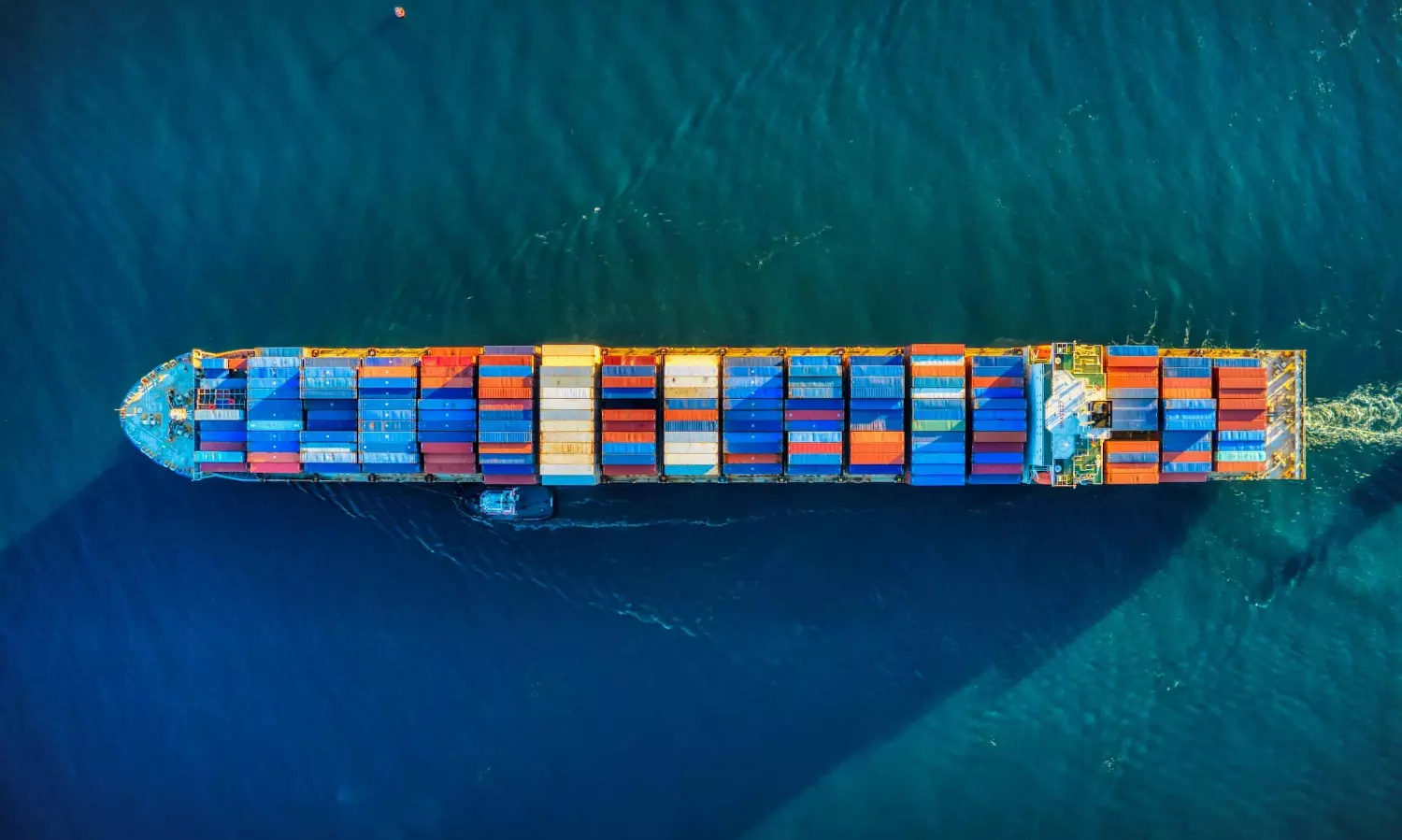
SHIPPING: Asia-US container rates flat to higher as capacity reduction offers support
LONDON : Rates for shipping containers were stable to higher this week as carriers have reduced capacity by 4-5% along the trade route amid efforts to stop the slide in prices, but capacity could surge and put downward pressure on rates if the Red Sea ceasefire holds.
On 6 May, US President Donald Trump announced that a peace deal had been struck between the US and Houthi rebels, which would bring attacks against shipping to an end in the Red Sea.
Since the start of 2024, traffic through the Suez Canal has collapsed and remains at roughly half pre-Gaza conflict levels.
CONTAINER RATES
Rates from online freight shipping marketplace and platform provider Freightos were flat week on week, and supply chain advisors Drewry showed a 4% increase in rates from Shanghai to New York and a 5% increase from Shanghai to Los Angeles, as shown in the following chart.
Drewry expects rates to be less volatile in the coming week as carriers are reorganizing their capacity to reflect a lower volume of cargo bookings from China.
Judah Levine, head of research at Freightos, said many US importers have paused orders out of China, but shippers (as well as manufacturers) can hold out only so long before consumers will start to see empty shelves or higher prices.
Import cargo at the nation’s major container ports is expected to see its first year-on-year decline in over a year and a half this month as the effect of tariffs increases, according to the Global Port Tracker report released today by the National Retail Federation and Hackett Associates as shown in the following chart.
Alan Murphy, CEO, Sea-Intelligence, said carriers have reduced capacity by 4-5% in April and May on the transpacific trade lane.
“When we look across what was deployed in April and what is scheduled for May combined, blanked capacity accounts for 19% of the total Asia to North America West Coast (NAWC) planned capacity, and 17% of the total Asia to North America East Coast (NAEC) planned capacity, across those two months,” Murphy said.
“But a high level of blank sailings does not automatically translate into a large reduction of capacity year on year, if the originally planned level of capacity, without blank sailings, constituted a large increase in capacity deployment on a year-on-year basis,” Murphy said.
Kip Louttit, executive director of the Marine Exchange of Southern California (MESC), said the ports of Los Angeles and Long Beach are seeing fewer arrivals than normal.
“For example, only 22 arrived the first five days of May, whereas 28.5 arrivals would be normal,” Louttit said. “Only nine are scheduled to arrive in the next three days, whereas 17 in three days would be normal.”
Container ships and costs for shipping containers are relevant to the chemical industry because while most chemicals are liquids and are shipped in tankers, container ships transport polymers, such as polyethylene (PE) and polypropylene (PP), are shipped in pellets. Titanium dioxide (TiO2) is also shipped in containers.
They also transport liquid chemicals in isotanks.
LIQUID TANKER RATES UNCHANGED
US chemical tanker freight rates assessed by ICIS were steady this week with rates remaining unchanged week on week despite continuing to see downward pressure for several trade lanes.
For yet another week, there is downward pressure on rates along the USG-Asia trade lane as charterers are still in wait-and-see mode. Besides contract of affreightment (COA) cargoes, there is very little seen in the market.
The tariffs and uncertainty continue to dampen the spot market, pressuring rates. As a result, owners are sending fewer vessels and therefore keeping rates stable for now due to the lack of available tonnage.
Similarly, rates from the USG to ARA and all other trade lanes also held steady. Although COA volumes are lower there are also fewer spot inquiries available.
Despite the lack of interest, rates remain unchanged as the clean petroleum products (CPP) market continues to remain soft leaving those vessels to participate in the chemical sector and pressuring chemical rates lower.
However, several cargoes of styrene, methanol and caustic soda continue to be seen in the market.
From the USG to Brazil, this trade lane had seen more inquiries, but there is plenty of available space for the balance of May lending downward pressure to spot rates.
This is leaving most owners still trying to fill up prompt partial space to WCSAM and to ECSAM for 2H May. Rates are soft and have lost some ground.
During the past week large parcels of MEG and caustic soda were seen in the market and as well as a CPP cargo further demonstrating the length in the market and weighing down on rates.
Along the USG to India route the spot market is stable and with its usual slow pace. No new cargoes have been heard from the US.
Source : ICIS
